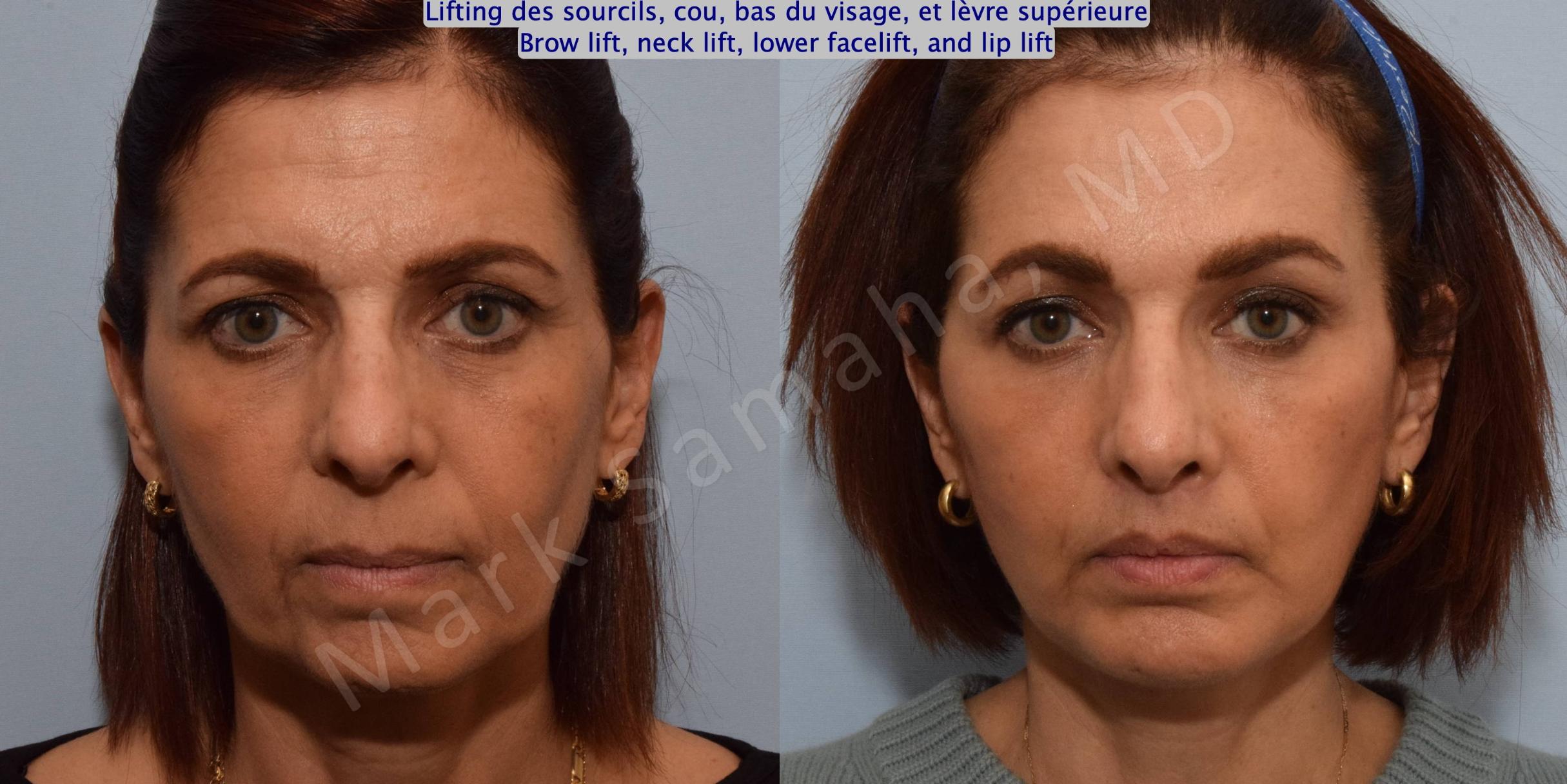Brow Lift
Ideal Brow Anatomy and Esthetics
The ideal female brow is shaped as a soft arch where the inner (near the nose) portion is at the level of the bone of the eye socket whereas the outer (near the temple) portion is above the eye socket bone. The male brow is lower, shaped as a more horizontal line at the level of the eye socket bone. Of course, these are general ideals which can vary according to each person’s facial anatomy. There are also significant ethnic variations.
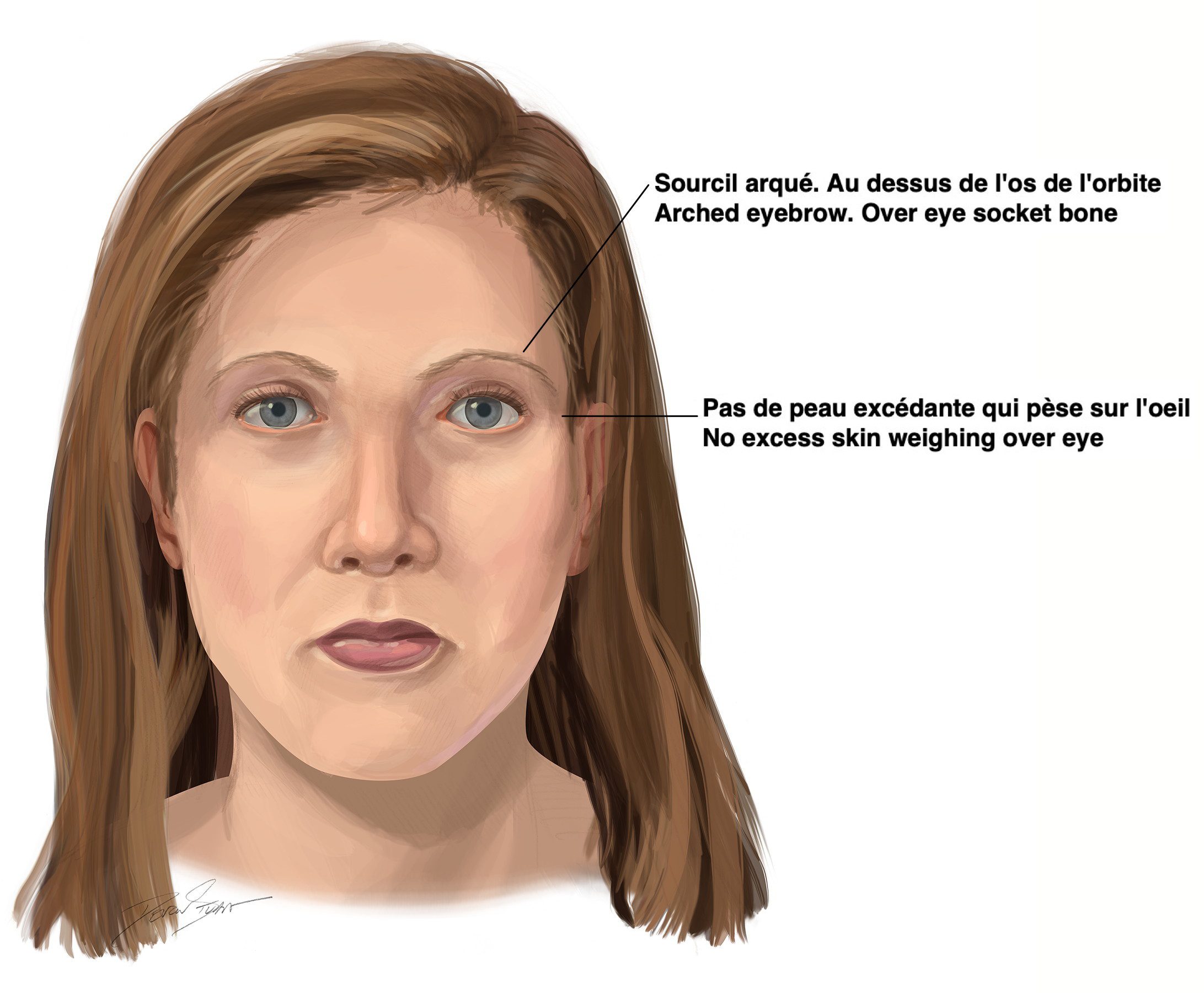
Figure 1 (a): Schematic of young woman with ideal brow showing arch and position over the eye socket
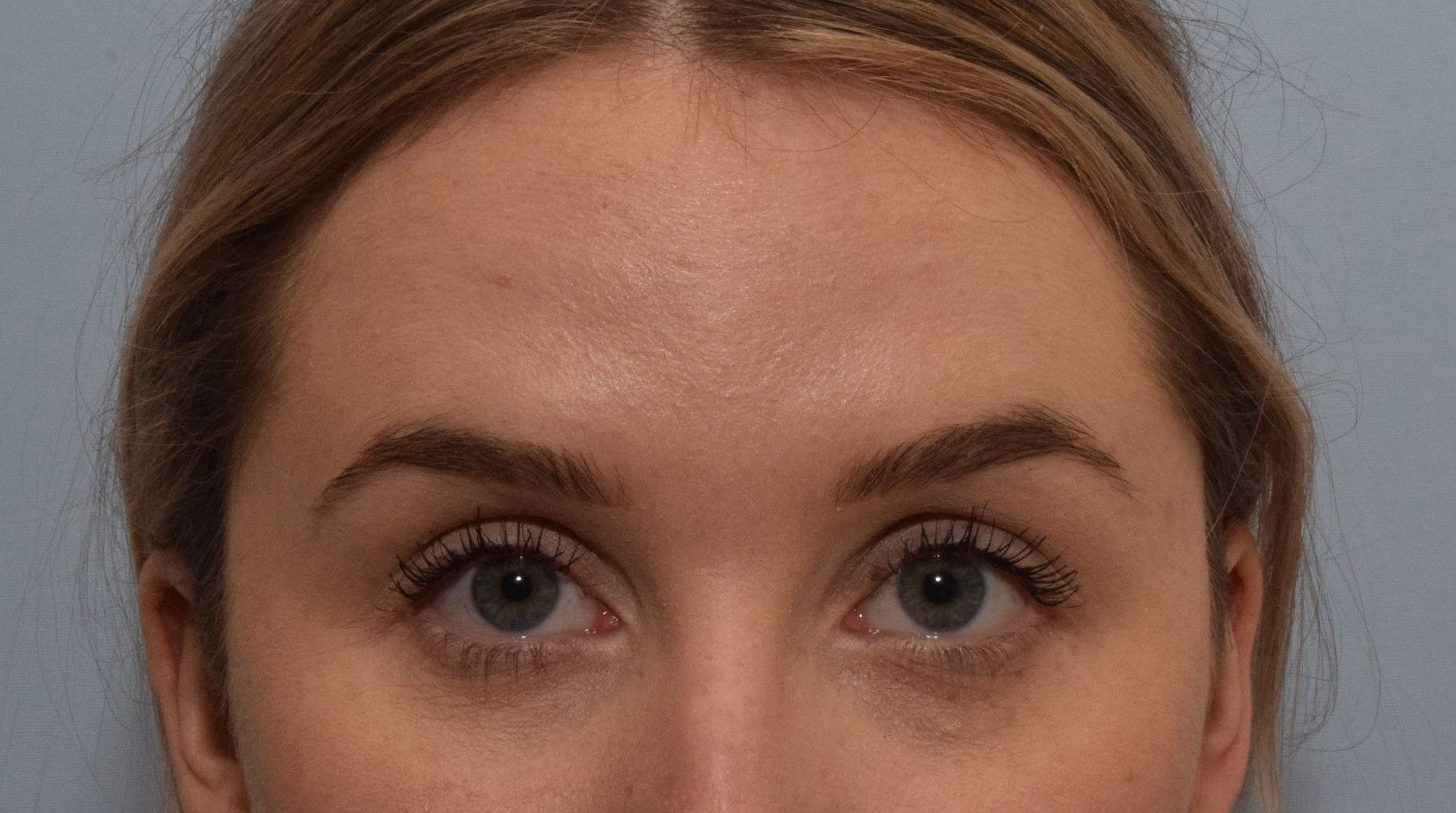
Figure 1 (b): Picture of young woman with ideal eyebrow shape and position.
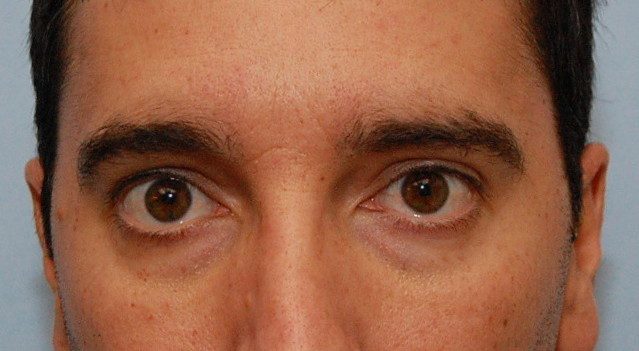
Figure 1 (c): Picture of a young man with ideal brow shape and position, lower and more horizontal than a woman’s.
What is a Brow lift Procedure?
This cosmetic procedure, sometimes also called a forehead lift, raises the brow to improve the appearance of the forehead, brow, and the area around the eyes. When the skin and muscles of the forehead become saggy and lax, the brow skin droops over the upper eyelid. The eyes become heavy and wrinkled. The effect of this droop is a sad or angry appearance.
To help address this sagging, Dr. Samaha performs brow lift surgery at his Montreal, Quebec facial plastic surgery practice in order to tighten the skin and muscles and lift the outer brow, opening up the look of the face and reducing the heaviness of the folds around the eye.
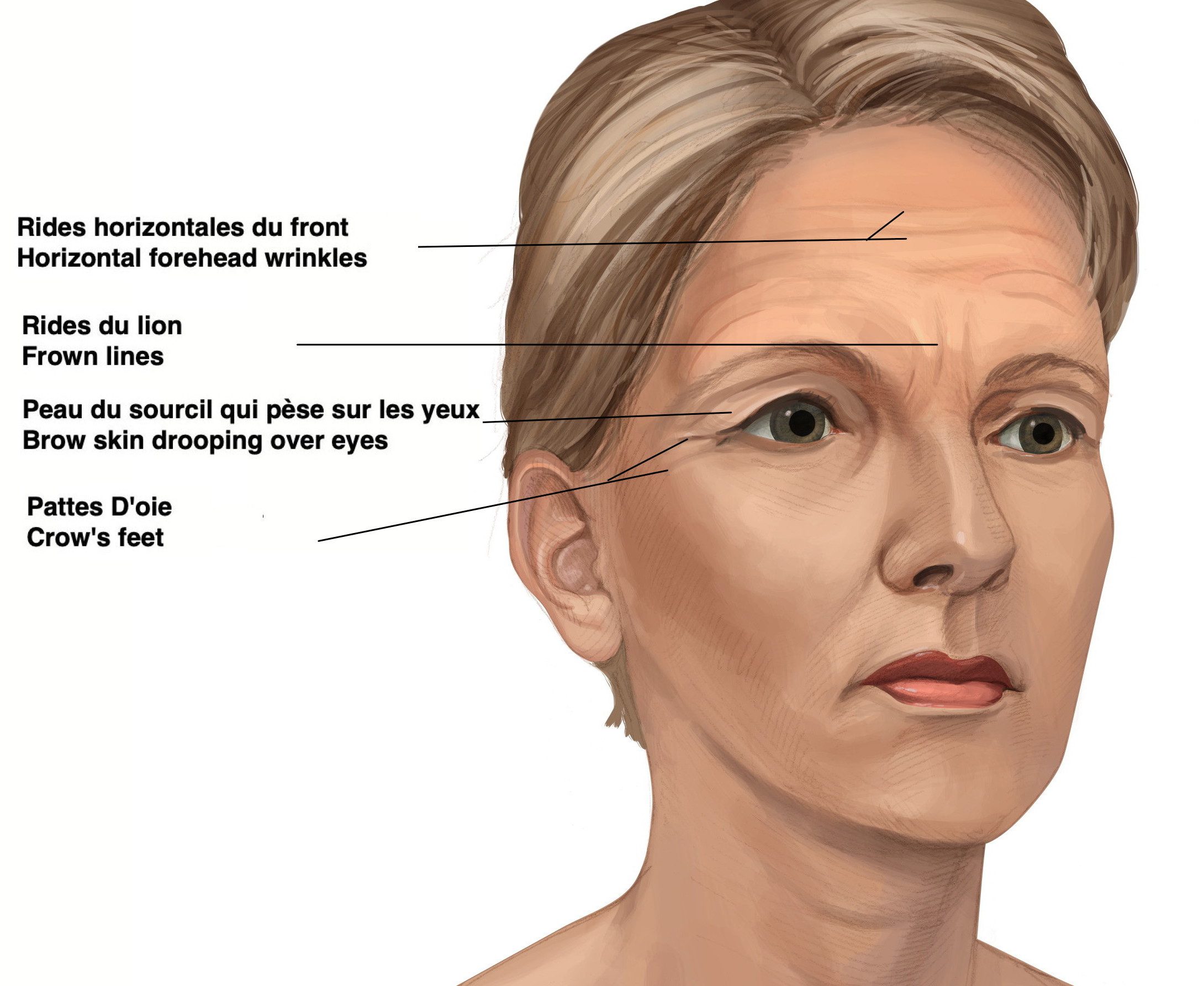
Figure 2 (a): Older woman with aging changes to the brow. The arch of the brow is lost. It is more horizontal, positioned lower at the bone of the eye socket. The excess skin droops over the eyes and there are wrinkles in the forehead.
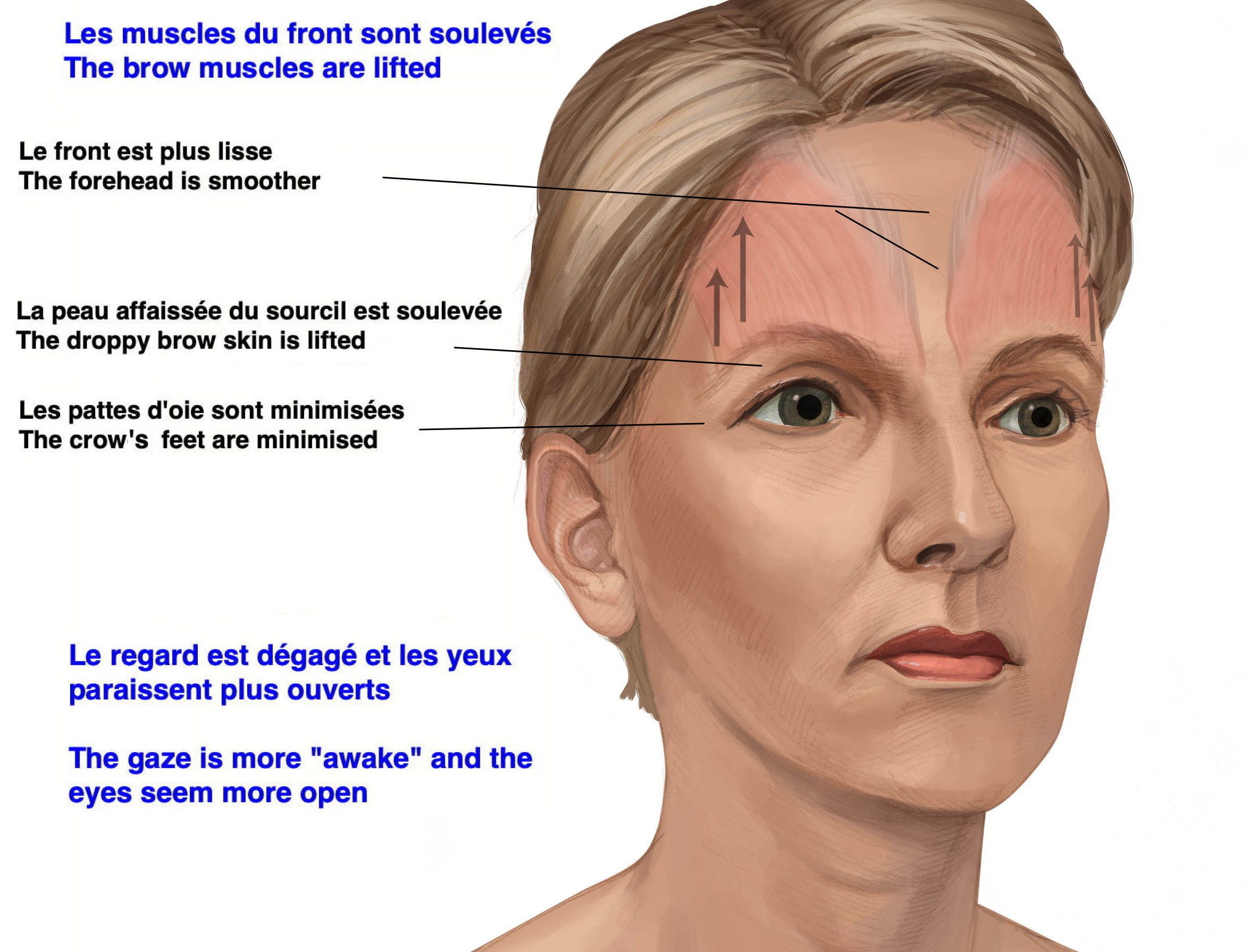
Figure 2 (b): Brow lift procedure shown where the muscle of the forehead is lifted to reposition the brows, recover the arch, eliminate the excess skin and improve he wrinkles in the forehead.
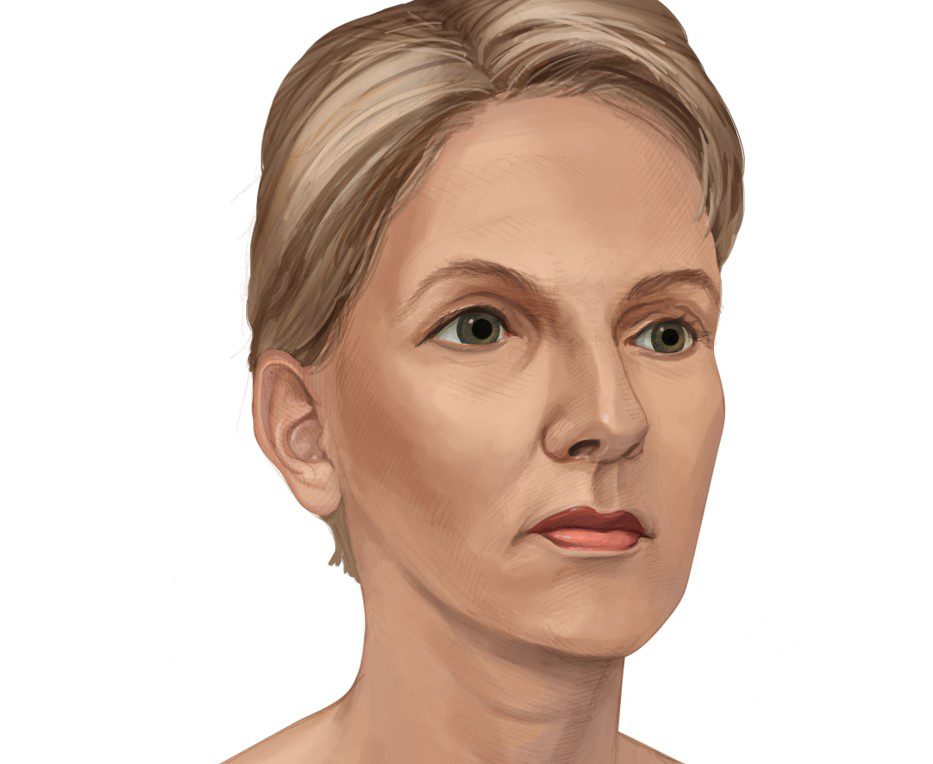
Figure 2 (c): After brow lift surgery.
The brow lift surgery lifts the lateral brow (the outer corners of the eyebrow), repositioning the brow to be higher, resulting in:
- The eyes appearing more open
- The heaviness over the upper eyelids is abated
- The forehead appears smoother with less wrinkles
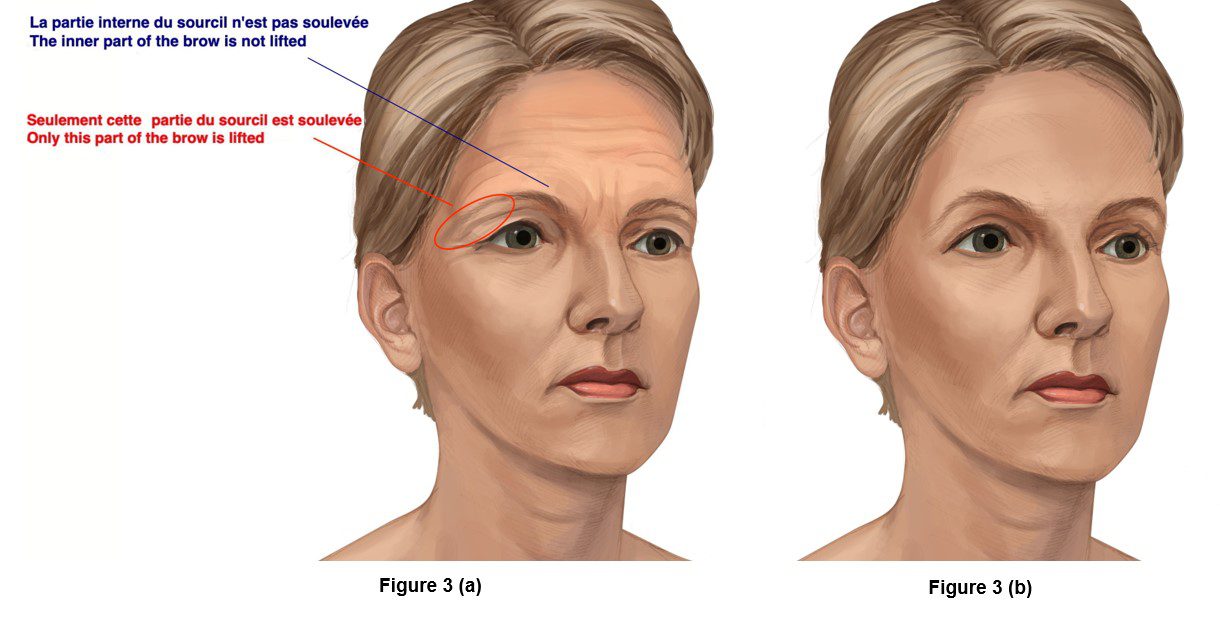
Figure 3 (a) aging changes of the brow and forehead and (b) after brow lift. Note that only the part of the brow near the temple is lifted. The inner part, near the nose is left untouched to avoid a surprised look.
What’s a Nonsurgical Brow Lift?
A non-surgical brow lift consists of injecting a neurotoxin (BOTOX® Cosmetic, Dysport®) in the area of the outer brow in order to effect a modest lift. This is effective in some patients, most of them younger.
While this can be a viable solution for patients who seek small changes to their brow region and have very minimal sagging, a surgical approach is often the more appropriate method to address most patient’s concerns.
Who Is a Candidate for Brow Lift Surgery?
Many patients in Montreal seek a consultation for this procedure because they have noticed a heaviness over their eyes and developed a reflex to lift their eyebrows that, over time, can cause deep forehead wrinkles to develop. Anyone who has a heaviness over their upper eyelids with a low brow is a candidate for brow lift surgery. Although brow lifts are more frequently performed on older patients, there are people in whom a low brow is not a result of aging. In these patients, droopy brows are hereditary and occur at a young age. Brow lifting is an excellent option for these patients as well, as they wish to look less severe and “softer.”
Candidates for a brow lift procedure are therefore:
- Young patients with droopy brows due to heredity/genetics
- Mature patients with low brows and heavy upper lids due to aging
Brow Lift
Dr. Samaha demonstrating effect of brow lift on a patient.
Brow Lift vs. Blepharoplasty (Eyelid Surgery)?
Patients will usually attribute the heaviness over their eyes to their eyelids. While this may be true in some cases, it is frequently the droopy brow that is the cause. The heaviness over the eyes can therefore be due to:
- Aging of the upper eyelid which is addressed by blepharoplasty surgery
- Genetically low brow in a young person or drooping of the brow due to aging in an older person, which are corrected by brow lift surgery
- Both of the above. In these cases, either brow lift or blepharoplasty, or both together may be performed.
It is important for the doctor to make the correct diagnosis and counsel the patient on the procedure that would be best suited to their situation. Many patients who believe they are a candidate for eyelid surgery are in fact better candidates for a brow lift. Performing a blepharoplasty on a patient who needs a brow lift or vice versa will yield a poor result, which may be difficult to correct.
Will I Have a Surprised Look?
In short, no. Like any surgery, when performed meticulously, by an experienced surgeon who has a keen artistic eye, the results are esthetically pleasing and natural. The surprised look arises from the unfortunate practice of exaggerating the lifting or raising the “inner” aspect of the brow, meaning the part of the eyebrow close to the nose.
It is therefore important that a brow lift procedure be performed in a subtle, artistic fashion by a skilled surgeon. With few exceptions, only the “outer” aspect of the brow, should be lifted. This helps give a natural, refreshed look, resulting in the eyes looking more open. It also relieves the heaviness and folding usually present on the outer corner of the eyes.
Combining Brow Lift Surgery with Other Cosmetic Procedures
A brow lift is performed either alone or very commonly in combination with other facial plastic surgery procedures to address other signs of aging or laxity in the face. The most common procedures performed at the same time as a brow lift are:
- Upper or lower blepharoplasty (eyelid surgery) to completely rejuvenate the area around the eyes.
- Facelift and neck lift to address middle and lower regions of the face that start to become lax and sag during the aging process.
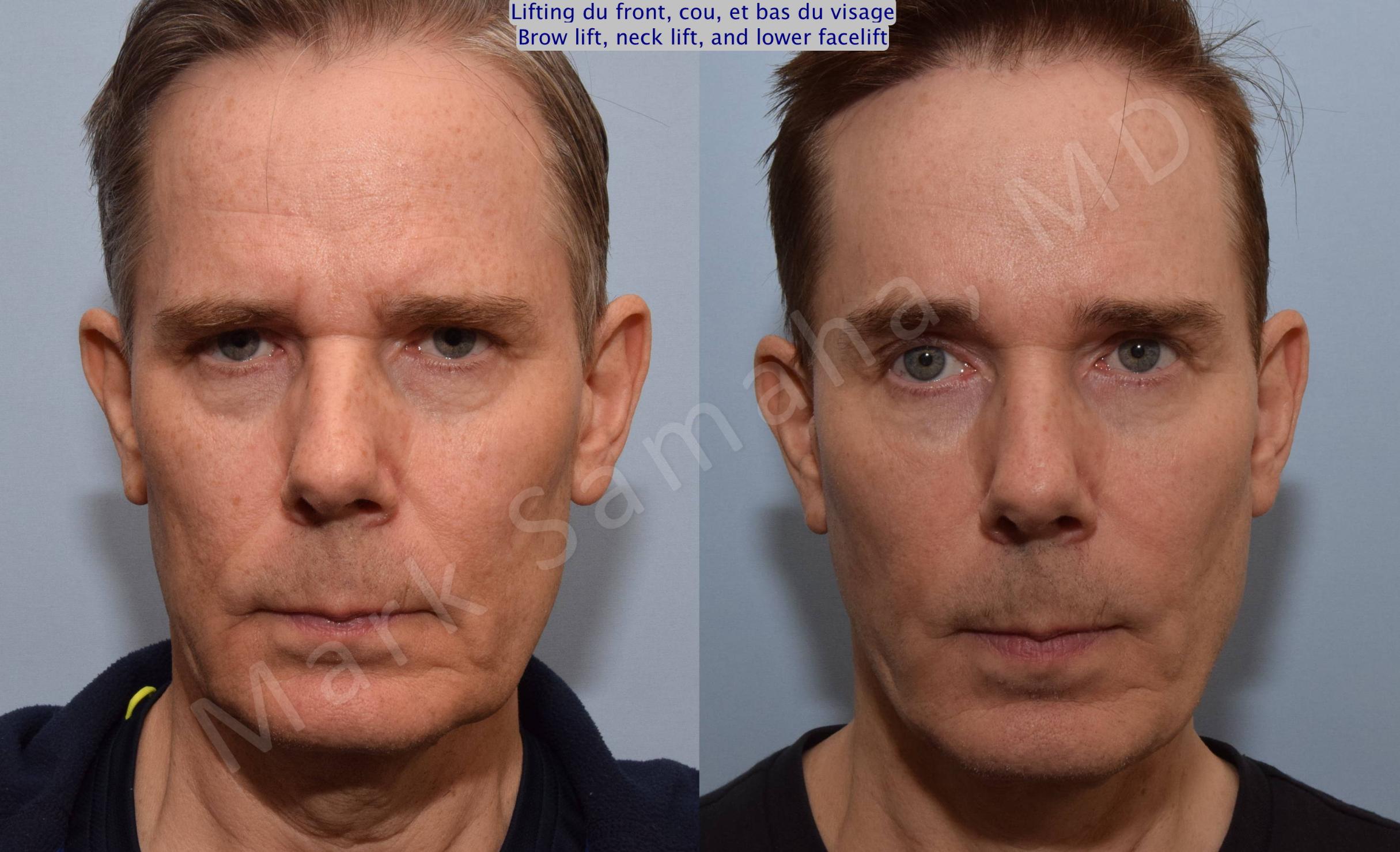
Case 91 – Brow lift, neck lift, and lower facelift
These photos are published for information only in order to provide information on the nature of the intervention. They do not constitute a guarantee of results.
Open vs. Closed Brow Lift
There are two ways to perform a brow lift here in Montreal, Quebec. The closed (sometimes called endoscopic) approach or open approach.
Closed Brow Lift
With the closed approach, incisions measuring approximately 3-4 cm are placed behind the hairline of the forehead and the surgery is then performed under the skin. No skin is removed. Rather the entire forehead skin is slid backward and repositioned in the process. This tends to bring the hairline backward. As a result, patients who already have a high hairline and a high (long) forehead are not good candidates for the closed technique and are better served using the open technique. In the past, a small telescope passed through the incision and attached to a camera was used. This technique was called and endoscopic brow lift. Nowadays, most expert surgeons no longer use a camera.
Open Brow Lift
With the open approach, a longer incision is made, either behind the hairline or hidden at the hairline itself. The surgery is then performed under the direct vision of the surgeon. The skin and muscle layers of the forehead are lifted, and a small amount of skin is removed. The hairline position is not moved back with this technique. This technique also exposes the forehead muscles responsible for frown lines and horizontal forehead wrinkles. The surgeon is therefore able to weaken these muscles, minimizing the wrinkles they cause. Finally, the open technique provides more control to correct the asymmetries of the brows that can be present in some patients.
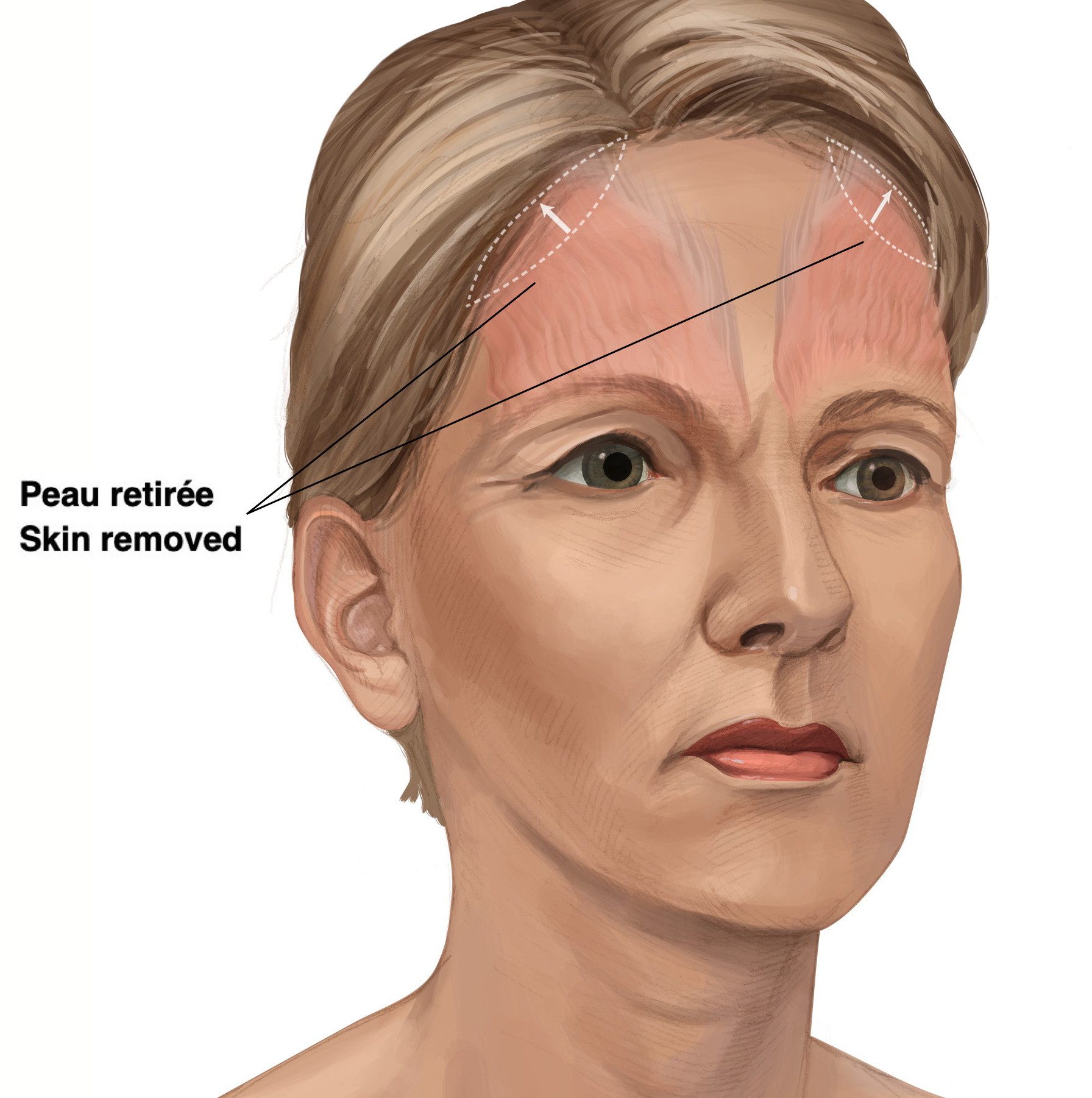
Figure 4: Ellipse of skin removed in open brow lift procedure. The width of these ellipses are carefully aligned with the portion of the brow to be lifted. The width of each side is usually different and is measured separately to correct asymmetries by removing more skin on the side where the brow is lower.
Which Technique or Approach Is Better Suited for Me?
Each technique has its advantages and disadvantages. Patients may be better candidates for one technique or the other depending on their anatomy, the severity of their case, the position of the hairline, and whether hair loss is present, particularly in men.
The closed brow lift is better suited in the following cases:
- Mild sagging of the brow without significant forehead wrinkles – usually patients under 50 years old
- Men with hair loss or baldness
- Mild to no asymmetry of the brows
The open brow lift technique is well suited for most cases, but particularly for the following cases:
- Significant sagging as a result of aging – usually patients over 50 years old
- Long forehead or high hairline
- Asymmetry of the brows
- Strong forehead muscles with deep wrinkles
Dr. Samaha performs both closed and open brow lifts. He applies his skills and extensive experience in facial surgery to analyze each patient’s features and choose the technique best suited for each patient’s anatomy to obtain the best possible result.
Meet Dr. Mark Samaha
A double board-certified otolaryngologist whose practice focuses exclusively on facial plastic surgery, Dr. Samaha is highly qualified in facial aesthetics. Learn more about our physician and how he’s carefully refined his skills to sculpt your beautiful face.
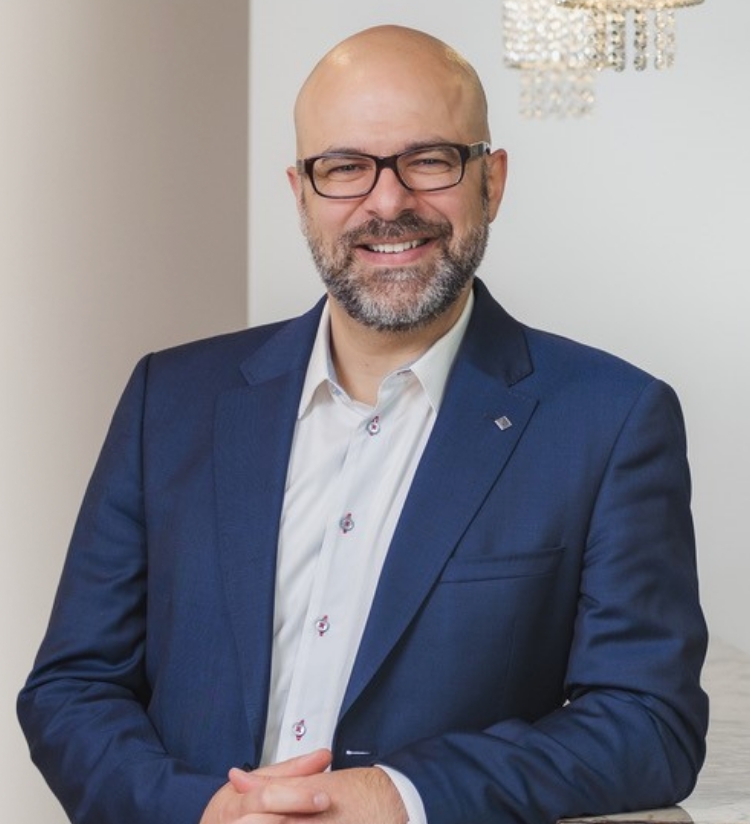
Meet Dr. Mark Samaha
A double board-certified otolaryngologist whose practice focuses exclusively on facial plastic surgery, Dr. Samaha is highly qualified in facial aesthetics. Learn more about our physician and how he’s carefully refined his skills to sculpt your beautiful face.
Does a Brow Lift Leave Scars?
All surgical procedures leave scars, but Dr. Samaha’s surgical technique results in well placed and thin scars that are imperceptible.
Brow Lift by Dr. Samaha:
Noticeable Results, Imperceptible Scar
Patient One
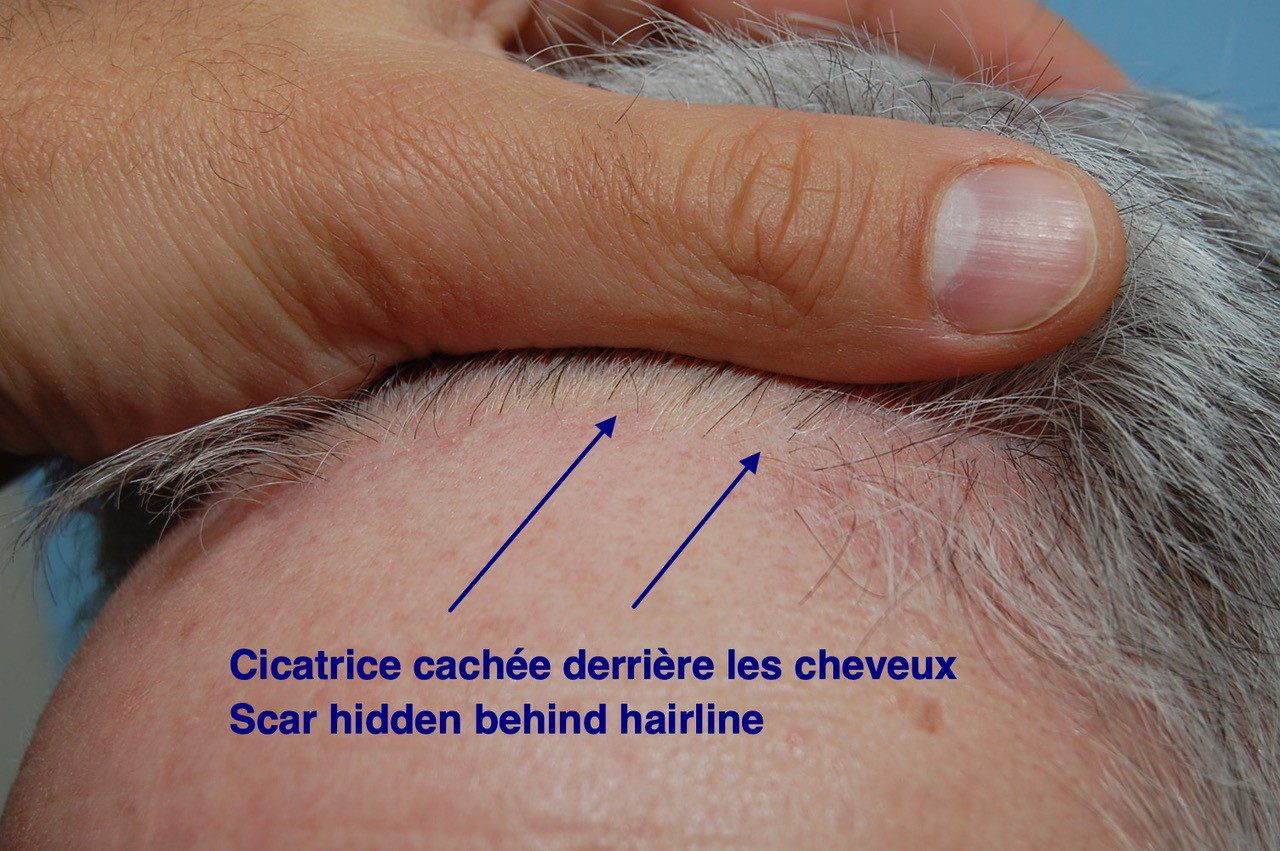
Patient with scar at hairline.
Despite her thin, short hair, this patient’s scar is imperceptible.
Patient Two
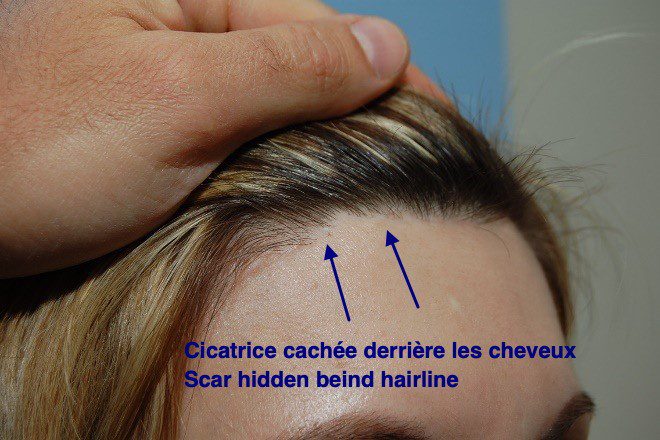
Patient with scar at hairline.
If properly designed and fashioned, hair should grow through the scar, as it does here, to camouflage it. As can be seen, the scar is very difficult to detect.
Patient Three
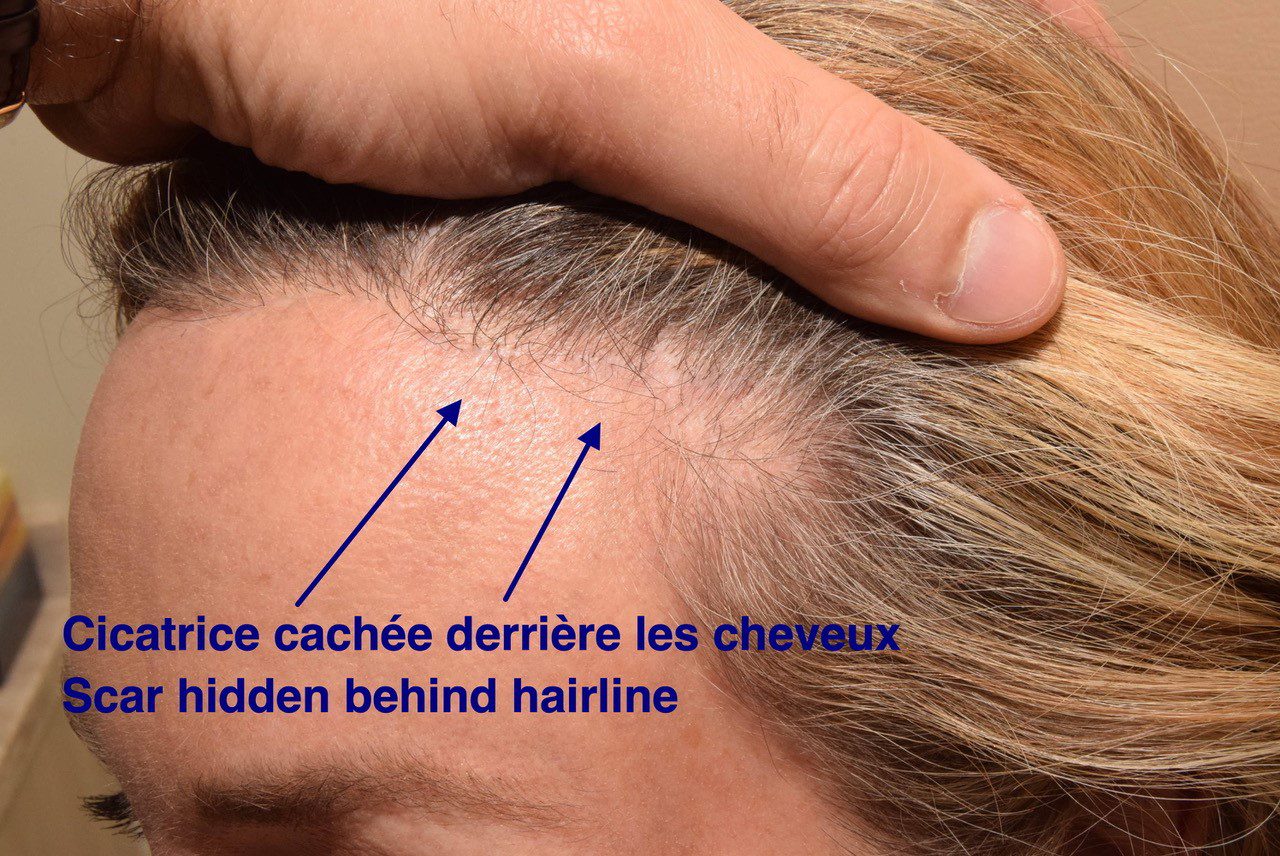
Patient with scar at hairline.
Another patient with a forehead lift scar. As can be seen, hair is growing through the scar rendering it imperceptible.
What to Expect During Surgery
The procedure takes approximately 1 to 1.5 hours to complete. Patients are given time to recover in the clinic. Our brow lift patients in Montreal go home within 1 to 2 hours following surgery. A bandage to protect the surgical area is placed and a drain will be placed in the incision to collect any fluid that may accumulate under the skin during the first 24-48 hours.
Recovery After Surgery
First 72 Hours
Patients return to the clinic for a follow-up appointment 24-48 hours after surgery. The bandage and drain are removed at this time. A lighter dressing is then placed, which the patient can easily remove and replace at home according to instructions provided. Patients can wash their hair 72 hours after surgery.
First Two Weeks
Sutures are removed at the second follow-up appointment 7-10 days after surgery. There is usually little bruising located under the eyes, which usually resolves within a week. Dr. Samaha examines the face, incisions and overall recovery. Most patients who don’t have strenuous jobs find that they can return to work and other normal activities after the first 10-14 days.
First Three Months
The initial swelling should begin to subside during the first week, at which point the initial result becomes apparent. Further “settling” continues in the weeks and months following surgery. Usually, within 2-3 months, the final result fully manifests, with scars significantly flattened, faded, and hidden in the roots of the hair.
MAXIMUM RESULT MINIMUM RECOVERY™
Dr. Samaha has developed techniques and methods to minimize swelling and bruising after surgery for his patients to shorten their recovery. This has culminated in his Maximum Result Minimum Recovery™ system.
Learn More
These photos are published for information only in order to provide information on the nature of the intervention. They do not constitute a guarantee of results.
Call our friendly staff now for expert help.
Caring team members are here to take your call from 8 a.m. to 5 p.m.

Call our friendly staff now for expert help.
Caring team members are here to take your call from 8 a.m. to 5 p.m.
Frequently Asked Questions
What’s the best age for a brow lift?
There is no specific minimum or maximum age. Dr. Samaha performs brow lifts on patients who have a droopy brow because of heredity and genetics. They are often in their 30’s. Patients undergoing brow lift surgery to correct brows that have drooped as a result of aging can be in their 40’s and older.
What are the restrictions after surgery?
The main restriction is the avoidance of vigorous exercise and heavy lifting for about 10 days. Other maneuvers that require straining are also to be avoided. This includes bending forward. Otherwise, patients may carry out usual activities.
How long is the recovery?
The recovery is usually one week. At that time, most swelling and bruising have disappeared. If other procedures such as a facelift are performed at the same time, the recovery may be a few days longer.
Is it a painful procedure?
No. Brow lifts are not usually associated with any discomfort. Some pressure may set in within 1-2 days and resolves very quickly within a few days. The overwhelming majority of Dr. Samaha’s patients report not needing to take any of the pain medication prescribed.
What about bruising?
Most patients will have some bruising under the eyes. The discoloration from bruising will gradually diminish to disappear usually by the end of the first week following surgery. Dr. Samaha uses advanced, minimally invasive techniques to minimize bruising and swelling after surgery.
How long does the effect last? Will I need another brow lift later on?
It is very unusual to need a second brow/forehead lift, even many years later. While a facelift involving the lower face may need to be repeated years later, it is rare to need another brow lift.
Is a brow lift and forehead reduction the same thing?
No. They are different procedures with different goals. The technique is also different. A brow lift (or forehead lift) aims to lift the brows back to their youthful position after they have sagged. In contrast, a brow reduction, in contrast, aims to reduce the height of the forehead, meaning the distance between the brows and hairline. A brow lift is performed by getting under the forehead skin and muscles and lifting them toward the hairline above. A brow reduction is the opposite: the skin and muscles of the scalp are lifted and brought forward toward the forehead.
Can this procedure address my hooded eyes?
Yes. Sagging brows create a heaviness over the eyes, which can exasperate the hooded eye effect. Therefore, lifting the brow greatly improves this. In some patients who also have excess skin on the eyelid itself, additional improvement can be achieved by combining a blepharoplasty with brow lift surgery.
Will my results look natural?
That is the most important goal. Dr. Samaha always aims to provide his patients with a natural result and avoiding an operated look. The most common mistake that a surgeon can make when performing a brow lift is lifting the “inner” part of the brow, near the nose. This gives an unfortunate appearance of a “surprised” look. Another issue is lifting too much, which yields an operated look and is a clear sign that surgery has been performed. An experienced, skilled facial surgeon who understands facial anatomy and possesses an artistic eye will avoid these issues, providing patients a result that appears refreshed and natural.
We look forward to working with you to create the best brow lift results possible. Request your consultation online or call us at (514) 613-3004. Dr. Samaha attracts patients from Quebec City, Laval, and Gatineau.

